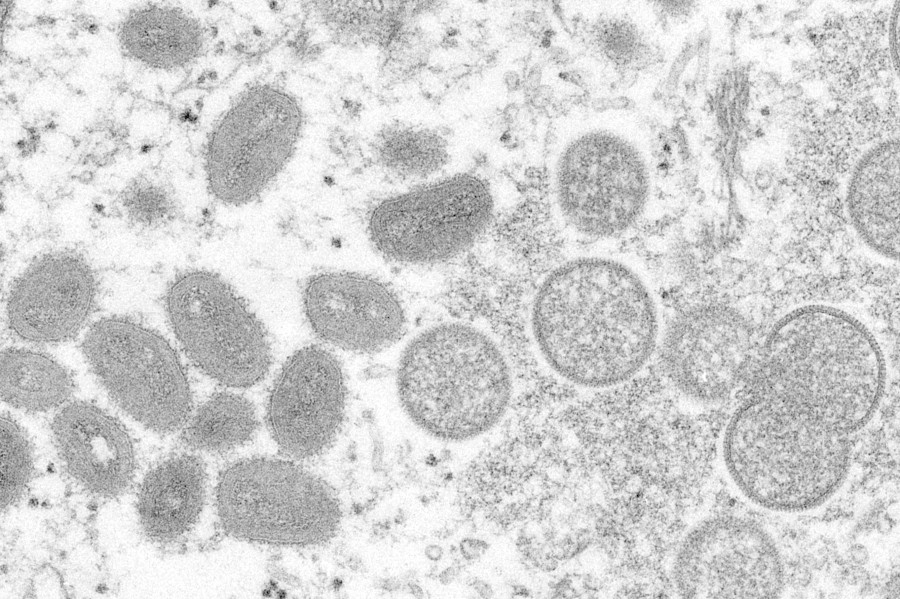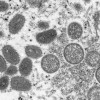![]()
![]()
COVID-19 Situation Report
![]()
Editor: Alyson Browett, MPH
Contributors: Clint Haines, MS; Noelle Huhn, MSPH; Amanda Kobokovich, MPH; Christina Potter, MSPH; Matthew Shearer, MPH; Marc Trotochaud, MSPH; and, Rachel A. Vahey, MHS.
![]()
VACCINATION STRATEGIES The WHO last week published an updated COVID-19 vaccination strategy prioritizing vaccination of certain populations, including healthcare workers, older people, individuals with underlying conditions, and other vulnerable groups. The focus is on reaching 100% of those populations while continuing efforts to achieve the goal of vaccinating 70% of the global population. The latter target was missed this month, as only 58 countries had vaccinated 70% of their population by mid-year. The new goal remains a challenge; only 28% of older adults and 37% of healthcare workers in low-income countries have received a primary vaccination series and most have not had booster doses. The WHO also called for greater equity in locating vaccine manufacturing facilities across all regions; said it will continue to collaborate with the COVAX initiative and other partners to support vaccine rollouts; and urged innovation to develop new vaccines that can substantially reduce SARS-CoV-2 transmission, are easier to administer, and provide longer-lasting and broader protection against current and emerging variants. Efforts are underway globally to create a Coronavirus Vaccines Research and Development (R&D) Roadmap focused on preventing a broad range of coronavirus infections.
In the US, the administration of US President Joe Biden is hosting a meeting today of federal officials, leading scientists, and pharmaceutical representatives to discuss next-generation COVID-19 vaccines, including new technologies and a timeline for development. Current vaccines are highly effective at preventing severe COVID-19-related illness and death, but researchers hope new vaccines will be capable of preventing infection and transmission of current and possibly future SARS-CoV-2 variants, as well as be more easily administered, such as through nasal sprays or skin patches. While some companies are developing Omicron-specific booster shots to be delivered this fall, that strategy—of trying to keep up with variants—is unsustainable over the long term. In related news, the Biden administration has slowed its push to quickly authorize second booster doses for adults under age 50 in the hopes that vaccine makers can have updated Omicron-inclusive shots as early as mid-September.
POST-COVID CONDITIONS IN CHILDREN An international study published July 22 in JAMA Network Open examined the prevalence of post-COVID-19 conditions (PCCs) in children infected with SARS-CoV-2 90 days after they were treated in emergency rooms. Overall, the study enrolled a total of 8,642 children who visited 36 emergency departments (EDs) in Argentina, Canada, Costa Rica, Italy, Paraguay, Singapore, Spain, and the United States between March 2020 and late January 2021. A total of 1,884 of the enrolled children tested positive for SARS-CoV-2 and completed a 90-day followup appointment. The study found that, overall, 5.8% of the children with COVID-19 who attended a followup appointment reported PCCs, including symptoms such as fatigue or weakness, cough, shortness of breath, and other respiratory issues that are in line with what most call “long COVID.” The rate was higher among children who were hospitalized (9.8%), regardless of symptom severity, compared with those who were discharged from the ED (4.6%). Most children (59.1%) reporting PCCs at 90 days had 1 persistent, new, or recurring health problem, most commonly including respiratory and systemic issues such as fatigue. Additionally, PCCs at 90-day followup were more common among children who were hospitalized for 48 hours or longer compared with those who were not hospitalized; children who had 4+ reported symptoms during their ED visit compared to those with 1-3 symptoms; and children who were aged 14 years or older compared to those younger than 1 year.
The researchers noted that the rates of PCCs among children with COVID-19 were only slightly higher than the rates among uninfected controls but called for appropriate guidance for follow up and treatment of children with COVID-19, as well as appropriate mitigation strategies. Overall, the study showed that children had a lower prevalence of PCCs than has been shown in most studies looking at long COVID in adults, but it is still possible that COVID-19 could lead to additional, future health problems among children. The best way to prevent the possibility of these impacts is to prevent infection. Notably, the study comes at a time when vaccinations for children between the ages of 6 months and 5 years appear to be slowing down in the US, with only 2.8% of the population having received their first dose. This rate of vaccine uptake is much slower than it was for kids between the ages of 5 and 11 years. Parents should be further encouraged to seek vaccinations for their children.
“COVID VIRGINS” An estimated 82% of US residents have been infected with SARS-CoV-2 at least once, according to the Institute of Health Metrics and Evaluation. Some of those individuals may think they have never had COVID-19 because they had an asymptomatic infection, but that leaves about 18% of the US population who have managed to avoid infection, even in times when the risk is high, such as during the winter Omicron surge or now, with the more transmissible BA.5 subvariant circulating widely. But that club of “super-dodgers” or “COVID virgins” becomes more exclusive each day. For example, in the UK, 55% of new COVID-19 cases are occurring among the approximately 15% of people who have never been infected.
The reasons why some people have yet to be infected likely vary, including engaging in preventive behaviors such as mask wearing or having vaccine-induced immunity. Beyond these factors, scientists are examining several others—including individuals’ genetics, immune system function, and the effects of inflammatory conditions such as allergies—that could influence their risk of SARS-CoV-2 infection. A specific genetic mutation in some individuals prevents most HIV strains from entering human cells, effectively rendering them immune to the virus. Something similar could be happening among certain people who have never had a SARS-CoV-2 infection, although some experts say the theory is a long shot. If scientists can identify such a mutation, they could use that knowledge to better understand who is most susceptible to infection and potentially develop new COVID-19 therapeutics.
US HOSPITALS Hospital systems in the US are struggling with funding shortfalls, staffing shortages, and pandemic fatigue as the SARS-CoV-2 Omicron BA.5 subvariant spreads across the nation. Once again, hospitals are reporting staffing problems due to burnout, high staff turnover, and absences due to COVID-19. Officials are worried that burnout could create additional challenges to providing treatment during a new surge of patients. Additional stress is being felt because federal funding for the COVID-19 response is running out. A deal in the US Congress on a $22.5 billion pandemic funding bill fell apart in March due to partisan infighting, leaving hospitals with no additional funds and significantly less flexibility to hire new staff or ramp up COVID-19 response efforts, even if BA.5 or a future variant leads to higher numbers of hospitalizations.
Meanwhile, CDC predictions for how hospitalizations and deaths will change due to BA.5 are uncertain. A forecast of new hospitalizations from 16 modeling groups predicted that the increase could range from 3,100-13,800 new COVID-19 hospitalizations per day by August 12. A similar forecast on new COVID-19 deaths from 17 modeling groups predicted that the increase could range from 1,800-5,600 new deaths per day by August 13. Additionally, a study published July 22 in the CDC’s Morbidity and Mortality Weekly Report (MMWR) showed that 40% of state and local governmental public health agency workers plan to leave their jobs within the next 5 years. More than half (51%) of the survey respondents reported the need for additional staff to adequately respond to COVID-19. The study only highlights public health and healthcare workforce staffing issues that existed prior to the pandemic and continue today. Sustained investments and large-scale healthcare reform is needed to adequately respond to COVID-19 and to prepare for future health emergencies such as a “Disease X” pandemic.
TREATMENT ACCESS IN US PRISONS The Federal Bureau of Prisons (BOP) is under scrutiny for its minimal use of COVID-19 therapeutics. The latest critique comes in a letter from 14 US Senators demanding an explanation for the limited use of therapeutics. Data show that federal prisons issued only 363 prescriptions for COVID-19-authorized antivirals from March 31, 2020, to March 24, 2022. Of those, only 3 prescriptions were for one of the preferred therapeutics, Paxlovid. Officials with the US Department of Health and Human Services said the BOP also has declined distribution of additional therapeutics despite the agency offering assistance. STAT News previously reported on BOP’s poor usage of allotted therapeutics, citing it as the latest example of BOP’s failure to effectively respond to outbreaks, leading to a disproportionately negative impact on inmates who already receive limited healthcare. The BOP reports 55,351 positive SARS-CoV-2 tests of the 128,703 tests completed by inmates in current BOP custody, noting that not all tests are reported to BOP. Currently, 71 of the 97 BOP facilities are listed as Level 3 facilities, operating at the highest level of modifications based on COVID-19 medical isolation rate, combined percentage of staff and inmate completed vaccinations series, and respective community transmission rates.
CHINA In an attempt to alleviate public concerns over SARS-CoV-2 vaccine safety, Chinese health officials this week disclosed that state and ruling Communist Party leaders had received domestically developed and manufactured shots. About 90% of the population is vaccinated against COVID-19 and 56% have received a booster dose. However, only 61% of people above age 80 have finished their primary series, prompting officials to make the unusual disclosure regarding the nation’s leaders. The announcement comes about 2 years after the nation launched its vaccination drive, primarily using vaccines made by Sinovac and Sinopharm. As of July 23, nearly one-fifth of China’s population was under COVID-19-related full or partial lockdown, and the country is experiencing another increase in cases, reporting 976 cases on July 25, versus 800 cases the day prior. China continues to enforce its “zero COVID” strategy, despite the policy’s unpopularity and damage to the national economy.




